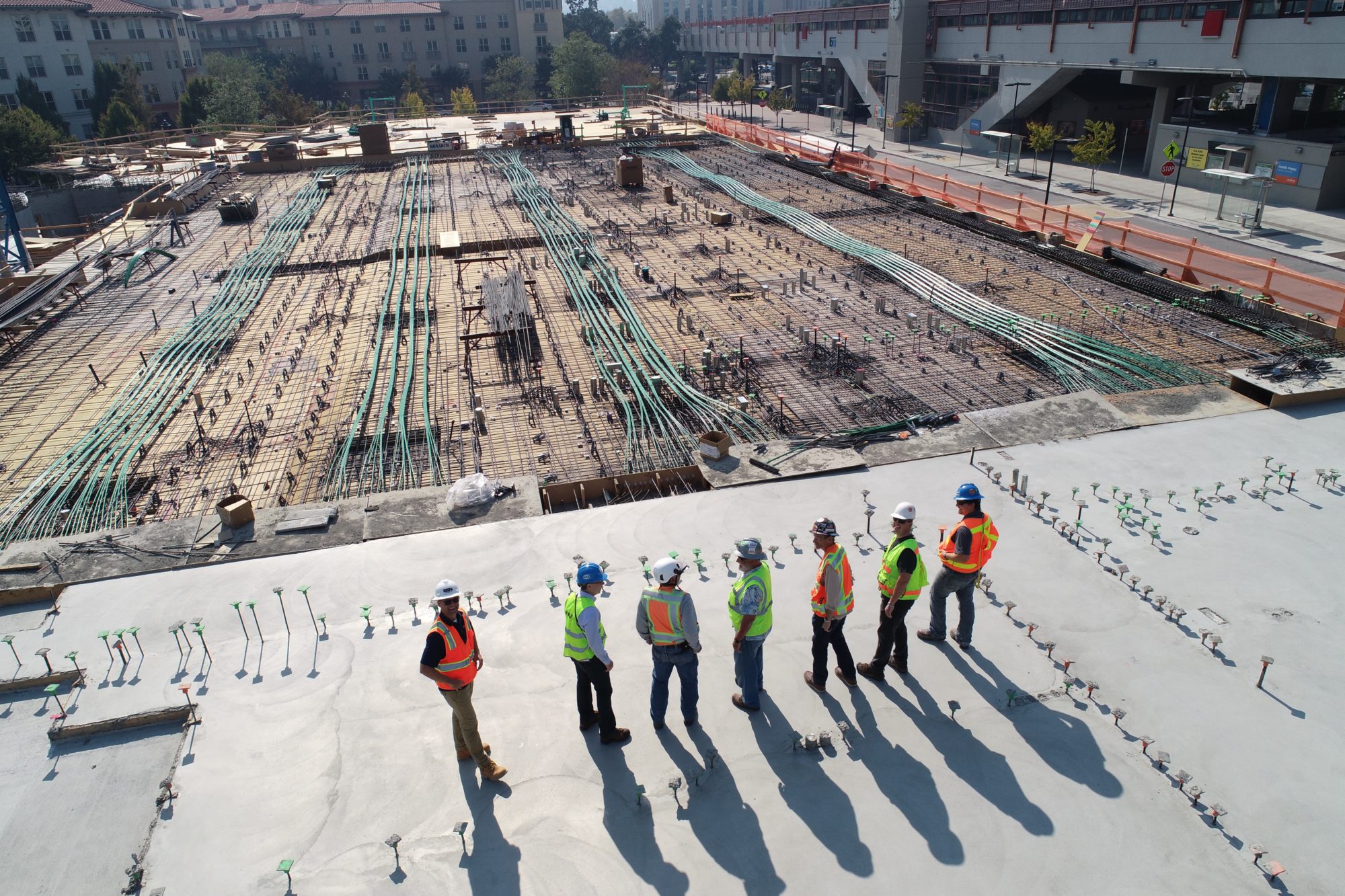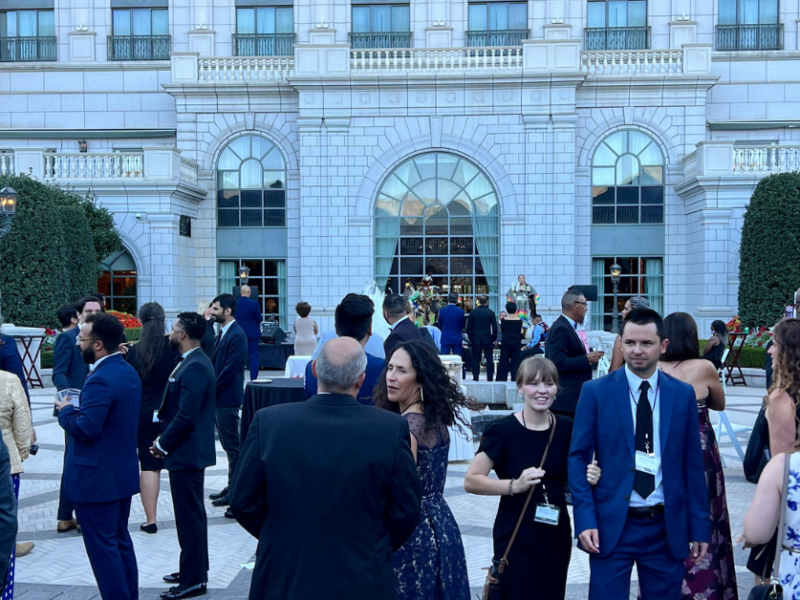
Here’s what’s going on with building, design, and construction in Utah
This month, Utah Business partnered with Dentons Durham Jones & Pinegar to host a roundtable event featuring Utah’s building, construction, and design leaders. Moderated by Bruce Bingham of Hamilton Partners, they discussed how Covid has affected their industries, supply chain and labor issues, and their outlook on what’s ahead. Here are a few highlights from the event.
How badly has Covid hurt you, and in what ways?
Allen Clemons | Design, Real Estate Development, and Construction Consultant
I believe it’s making the industry better because we have to truly plan now. I think if we’re all honest with ourselves, we understand that it’s the old industry joke, right? At the end of a job, none of us sit around the room and say, “Boy, we sure over-planned that job!” I think now we’re having to be far more deliberate and strategic and implement actionable plans that we can actually accomplish because people are getting tired of hearing the Covid excuse.
Brandon Squire | President | Ralph L. Wadsworth Construction Company
I agree that the Covid fatigue is real. It’s not only affecting our personnel as far as staffing, but our people don’t expect subs to show up on time. They don’t expect materials to show up on time. It’s impacting their mentality, like, “Nothing’s going to go right today,” because there’s always something that’s going to change.
Troy Gregory | President & CEO | Hunt Electric, Inc.
The fatigue on employees is real, and the biggest impact is just having to adapt to the things that happen every single day. Like when a key individual on a project tests positive. We’re constantly having to shuffle the crew and shuffle key leadership to fill those gaps and get them taken care of. It’s constantly trying to manage change and things that are unpredictable.
Vern Latham | Principal | VCBO Architecture
During Covid, we found that we were pretty productive. We had one of our best years ever in 2020. In 2021, we really tried to get back in the office because one of the things we realized is that as a design profession—and it may be the same with construction companies too—we need to be there together. There’s a certain synergy you have as designers putting construction documents together that you don’t have sitting in homes around the valley.
Ben Davis | VP, CFO | Van Boerum & Frank Associates, Inc.
We have a hard time getting people to come to the office. In fact, it is 60 percent still, and it’s just endless excuses of why they can’t come in today. I don’t think people are as productive when they’re not in the office. What we found is that the people that work when they’re in the office also work when they’re at home, and the people that don’t work when they’re in the office also don’t work right at home—except even more.

What kind of problems do we need to consider around supply chain issues? Is there any relief coming?
Dennis Cigana | CDO | Jacobsen Construction
2021 was an interesting year. We saw some really sharp increases in steel or anything associated with the coil product. Copper is up high, and so is structural steel joist and deck. From what we’re hearing, we know that concrete supply is going up $12/yard at the beginning of this year. I don’t know if there’s going to be relief. It’s rippling through all the industries, from what I’m hearing. We’re hopeful, but our economy is booming. We have never seen anything like this. People want to be here. People want to build. Developers are coming in from out of state.
Scott Reynolds | COO | Altaview Concrete
We had a cement shortage in 2021, and that was really because of the lack of a winter in 2021. The robust economy took that supply that built up through the wintertime, and we had nothing to carry us through. We really have two cement suppliers across the state, and importing cement is difficult. We have to rely on those suppliers here locally to make sure that they are up and running. If they have any downturn, that affects us all for sure. Raw material cost in itself is increasing exponentially.
Sam Wilding | Director of Sales and Engineering | IsoTruss, Inc.
IsoTruss is probably a little different than most of the companies here. We make carbon fiber structures, so the steel price increase is actually really good for us because carbon fiber is a lot more competitive. We have 40 employees, so we’re a small startup, but Covid has been good for our business in some ways—a lot of the materials we compete against are going up, and carbon fiber hasn’t gone up as much. So our value proposition is more compelling.
Chris Knoles | Director of Marketing | Zwick Construction Company
What are we doing in our contracts to mitigate the effects of inflation so that no one party bears the entire load? I think it’s about getting together early and just saying, “Guys, no one can say for certain where inflation will be a year from now. So how do we make sure that we carry the load equally?” And I think that’s the key, just having an upfront discussion and sharing that burden. At the end of the day, everybody wants the project to be successful and no one wants to penalize the other people on their team.
What’s going on in terms of labor issues?

Clint Costley | President | Kier Construction
It’s reported that 4.5 million people left the workforce in 2021. I don’t know how many of those were here in our region of the world, but I’m assuming it was a lot. We have that challenge every day, even on our own projects. There’s virtually zero loyalty in the workforce right now. Everybody is focused on one thing, and it’s dollar-driven. It’s monetary driven. We’re bursting at the seams with opportunity, but we’re being burdened with trying to complete our projects with a very reduced workforce in every category across the board.
Ben Davis | VP, CFO | Van Boerum & Frank Associates, Inc.
We compete directly for engineers with companies like Boeing and Northrop Grumman, so our costs are going up. Generally speaking, engineering costs have to rise—I’m expecting 20 to 30 percent. And I think that’s pretty much in line with what I’m seeing inflation-wise. It is tough to hold onto people.
Additionally, we take these hard stances on whether we believe in the vaccine or not. We have to allow [employees] to believe one way or the other because we really need them. If we said, “You can’t come to the office because you don’t have your vaccine,” well, we could lose 30 percent of our workforce. We’ve just had to have more of what almost feels like a parenting stance with the respect of our employees—taking care of them, watching out for them, providing them facilities that we have never had to provide before. It’s just what they expect nowadays.
Brannon Burton | Area Manager | Sunroc Corporation
There’s a lot of turnover, but our core guys—probably 80 or 90 percent of them—have been very solid. We don’t lose them. I think it’s a cultural issue. Pay has had to go up quite substantially. We pay hourly, but you’re talking $2, $3, $4 an hour raises—quite a big jump in one year. We’re not hiring our way out of this problem. We’ve got to figure out a way to utilize our guys better if we’re going to make this work. The silver lining on it is, you don’t grow when things are easy. You don’t get better when things are simple. You’ve got to start using your mind. You’ve got to start to think differently, and if anything, that’s the silver lining of all this. We learned and grew our people better than we ever have in the history of Sunroc because we’re forced to.
Troy Gregory | President & CEO | Hunt Electric, Inc.
The whole construction industry has a shortage of people wanting to come into the industry. That’s been a problem for ten years, and I’ve actually seen great improvement in the last few years. There are some positive things—people are looking at skilled trades as a good career path, and we’ve done a good job of bringing those people in. Our challenge, when we’re hiring, is trying to build that workforce to take care of our clients because there’s so much out there. It’s the challenge of trying to build the culture around those people that are new employees, and we’re really focused on that.
Dana Farmer | Shareholder | Dentons Durham Jones Pinegar
I’ve had multiple construction clients come to me and say, “What can we do to go and recruit people from South America?” That predates Covid—that’s been a top-list issue from a lot of clients, really since stuff ramped up after the recession. And it’s only been more so since Covid. I have also had several clients come to me who are large enough that they fall within the 100 employee classification. And they say, “Do I need to split up my business? Or what are some strategies that I can do to deal with this mandate?” They know they’ve got people who are not going to get vaccinated under any condition. Companies are splitting because of divisiveness over political sides.

Troy Thompson | COO | Big-D Construction
Some of us have served on the Associated General Contractors of America (AGC) in different capacities over the last 10-15 years. And that’s a problem we’ve been working on: How do we get a better recruiting platform within the whole state of Utah? We first targeted the high schools. And then we found out we had to go down to the junior high schools. And now there are discussions about going down to the elementary schools. But it’s no secret that these kids, most of them, don’t want to work with their hands. They don’t want to work out in the cold weather. So our recruiting efforts are harder than it’s ever been before. As an industry, we’re short—not hundreds or thousands of jobs, but tens of thousands of jobs. And it’s not going to be a 40 and above age group that’s out there to hire. It’s going to be these kids coming out of school. And we’ve got to approach that very, very seriously.
Eric Nay | Executive VP | Layton Construction
Culture matters more now in this industry than ever before. What do you do for the employees? Do you care about your employees? Do you manage what matters to them and their career path? What do you do as a team? How do the people coalesce together? How do they collaborate together? What is that feeling in the office? People don’t know how much you care until you actually show them how much you care. It’s almost like the construction industry is turning into the tech industry in some regards—the culture around each employee’s experience matters more than ever.
Aaron Metcalfe | VP of Marketing & Business Development | Hogan & Associates Construction
Troy is right. I think it really comes down to reaching down even into the elementary schools. Not even having them think about it as a career, but it’s all about positivity about the industry. How many of us, when we were growing up, played with Tonka trucks? We were out there in the sandbox, and right now, it’s not that way.
We can talk about how fun and satisfying it is and then just build upon that, no pun intended, as we go into junior high and high schools. We need to coalesce a little bit more in these CTE centers and really get these kids thinking about construction as an option. They’re not really seeing what else is out there and the bigger picture and the really great things about commercial construction and all the cool things that they can build.
Tim Conde | Director of Legal Affairs, Project Executive | Okland Construction
I think with the labor shortage, we’ve got to go find the talent, but when they’re here, I think we all understand we have a heightened duty to develop them quickly. Are we sharpening our processes so that they’re easy to understand? So that someone has the ability to succeed easily? In the past, you could afford to have somebody learn the ropes for 6, 12, 18 months, etc. Now it’s like, how can we get them in and feeling successful as soon as possible?
They get on a job, and they don’t have clear instructions. They don’t have clear leadership. And all of a sudden, they throw their hands up and say, “Well, I can’t do this.” Nobody likes to feel like they’re not succeeding. As an industry, I think we’re getting better at understanding that we’ve got to develop our people. We have to give them clear instructions and have processes and systems in place that anchor them so that when they show up on a job site, they know what it looks like to win—and then they can win and go home feeling satisfied.

What do you see for your industries moving forward?
Mark Oakeson | Commercial Division Manager | Wadsworth Brothers Construction
Despite all of the problems that we’ve discussed here, we’re living through a really good time. We’re economically set in the state very well, I think, and we’re all going to be the beneficiaries of that. And there are some challenges, but it’s an exciting time to be in construction.
James Williams | President | AE URBIA, J.M. Williams and Associates
I think the future of Utah is bright. We’re very fortunate to live here. We’re fortunate to be in the industry that we are. I think this is a turning point where we can control what the future’s going to be for Utah. We can make this even a better place than it is already, and we’re blessed because there’s such a large demand.






